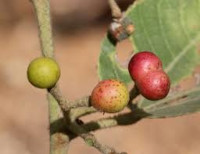Dry Granule Formulation For Ciprofloxacin Hydrochloride Capsule Using Co-Processed <i>Grewia Mollis<i> Gum
Main Article Content
Abstract
Co-processing excipients improve functionality, dosage form processing and drug delivery. This research seeks to employ co-processed grewia gum in the formulation of ciprofloxacin capsule. Grewia gum was extracted from Grewia plant stem bark and purified. The gum was analysed for drug interaction using FT-IR and DSC techniques. Eight combinations of grewia gum, lactose and microcrystalline cellulose were derived from 23 factorial designs and co-processed using the wet agglomeration method. The co-processed excipient was analysed for micromeritic properties, kneaded with ciprofloxacin and granulated. The granules were analysed for densification properties, and filled into size 00 hard gelatin capsule shell. The capsule was analysed for physicochemical properties. The yield of grewia gum was 32.87 %. The FT-IR and DSC results showed no new chemical entity. The co-processed powder excipients showed angle of repose, Carr’s indices and Hausner ratios less than 29.23, 15.95 and 1.15 degrees respectively, and flow rate greater than 21.19 grams per second. The granules gave yield strength and compactibility ranges of 133.32 to 720.62 and 0.07 to 0.19 respectively. These results value fall within reference indices of good powder flow and granules compaction. Capsules from the nine batches disintegrated within 12.5 minutes and dissolved between 54 and 62 percent drug after 60 minutes in both acidic and basic pH media respectively. The optimal formulation containing 78.3, 17.4 and 4.3 percent lactose, grewia gum and avicel respectively showed extended drug release properties. Increasing the concentration of grewia gum in co-processed excipient improved flowability and processing efficacy of ciprofloxacin hydrochloride capsules.
Metrics
Article Details

This work is licensed under a Creative Commons Attribution-NonCommercial 4.0 International License.
References
Nnamani ND, Onaga IC, Esezobo S. A comparison of physicochemical properties of high drug-loaded tablets formulated with cold gelatin gummies. J Pharm Allied Sci. 2022; 19(3): 3769-3780.
Pusapati RT, Kumar MK, Rapeti SS, Murthy T. Development of co-processed excipients in the design and evaluation of atorvastatin calcium tablets by direct compression method. Int J Pharm Investig. 2014; 4(2): 102-106. Doi:10.4103/2230-973X.1333059
Bhavana P, Reddy MS. A review on co-processed excipients used in direct compression of tablet dosage form. GSC Bio Pharm Sci. 2023, 23(01): 212-219. https://doi.org/10.30574/gscbps.2023.23.1.0100
Benabbas R, Sanchez-Ballester NM, Bataille B, Sharkawi T, Soulairol I. Development and pharmaceutical performance of a novel co-processed excipient of alginic acid and microcrystalline cellulose. J Powder Technol. 2021; 378, 576–584. https://doi.org/10.1016/j.powtec.2020.10.027
Djordje M, Jelena D, Mirjana K, Svetlana, I. Improving Tableting Performance of Lactose Monohydrate by Fluid-Bed Melt Granulation Co-Processing. Pharmaceutics. 2021; 13(12). https://doi.org/10.3390/pharmaceutics13122165
Bin LK, Hui HS, Uddin AH, Saraker ZI, Ling CY. Co-processed excipients: a revisit of its development in the past two decades, a review. J Pharm Negative Results. 2022; 11:96-103.
Enadeghe OD, Eraga SO, Obarisiagbon JA. Evaluation of the disintegrant and binding properties of avocado seed starch in paracetamol tablet formulations. Trop J Phytochem Pharm Sci. 2024; 3(2): 168-173 https://doi.org/10.26538/tjpps/v3i2.2
Nep EI, Conway BR. Characterization of grewia gum, a potential pharmaceutical excipient. J Exc Food Chem. 2010; 1(1): 30-40
Pongri AW, Igbe I, Bafor E. Antiatherogenic and antiobesity effects of aqueous stem bark extract of Grewia mollis Juss (Malvaceae). Trop J Nat Prod Res. 2023; 7(9): 4103-4111. http://www.doi.org/10.26538/jtjnpr/v7i9.39
Ogaji IJ, Okafor IS, Hoag SW. Grewia gum as a potential aqueous film coating agent. 1; Some physicochemical characteristics of fractions of Grewia gum. J Pharm Bioallied Sci. 2013; 5: 53-60
British Pharmacopeia (2017). British Pharmacopeia Commission, Vol. 1. pp 177-179, 948, 569 -570
Tessema TA, Feroche AT, Workneh GA, Gabriel T. Physicochemical characterization of cellulose and microcrystalline cellulose from Cordia africana Lam. Seeds. J Nat Fibers. 2023; 20(2) https://doi.org/10.1080/15440478.2023.2198278
Samineni R, Chimakurthy J, Konidala S. Emerging role of biopharmaceutical classification and biopharmaceutical drug disposition system in dosage form development: a systemic review. Turk J Pharm Sci. 2022; 19(6): 706-713. Doi:10.4274/tjps.galenos.201.73554
Benke E, Varga P, Szabo-Revesz P, Ambrus R. Stability and in vitro aerodynamic studies of inhalation powders containing ciprofloxacin hydrochloride applying different DPI capsule types. Pharmaceutics. 2021; 13(5): 689. Doi:10.3390/pharmaceutics13050689
Chouksey K, Sahu A, Ganju K. Formulation and evaluation of ciprofloxacin hydrochloride sustained release tablets using hibiscus rosa sinensis mucilage. J Adv Sci Res. 2022; 13(08): 71-78. Doi:10.55218/JASR.202213811
Talik PAW, Øuromska-witek B, Hubicka U, Krzek JAN. The use of the dsc method in quantification of active pharmaceutical. ACTA Pol Pharm Drug Res. 2017; 74(4), 1049–1055.
Sato T, Morita N, Yonemochi E, Takayama K. Derivation of the extended Kawakita equation for estimating the yield state of powder in die. Chem Pharm Bull. 2024; 72(1): 86-92. https://doi.org/10.1248/cpb.c23-00721
Frances C, Veiga MD, Espanol OM, Cadorniga R. Preparation, characterization and dissolution of ciprofloxacin / PEG 6000 binary systems. Int J Pharm. 1991; 77(2-3): 193-198. https://doi.org/10.1016/0378-5173(91)90317-H
Fathy M, Hassan MA, Mohamed FA. Differential scanning calorimetry to investigate the compatibility of ciprofloxacin hydrochloride with excipients. Pharmazie. 2002; 57(12): 825-828. PMID: 12561245.
Castellanos A. The relationship between attractive interparticle forces and behaviour in dry and uncharged fine powders. Adv Physics. 2005; 54(4):263-376. https://doi.org/10.1080/17461390500402657
Chaerunisea A, Sriwidodo S, Abdassah M. Microcrystalline cellulose as pharmaceutical excipient. Pharmaceutical Formulation SDesign – Recent Practices. IntechOpen 2020. http://dx.doi.org/10.5772/interchopen.880


